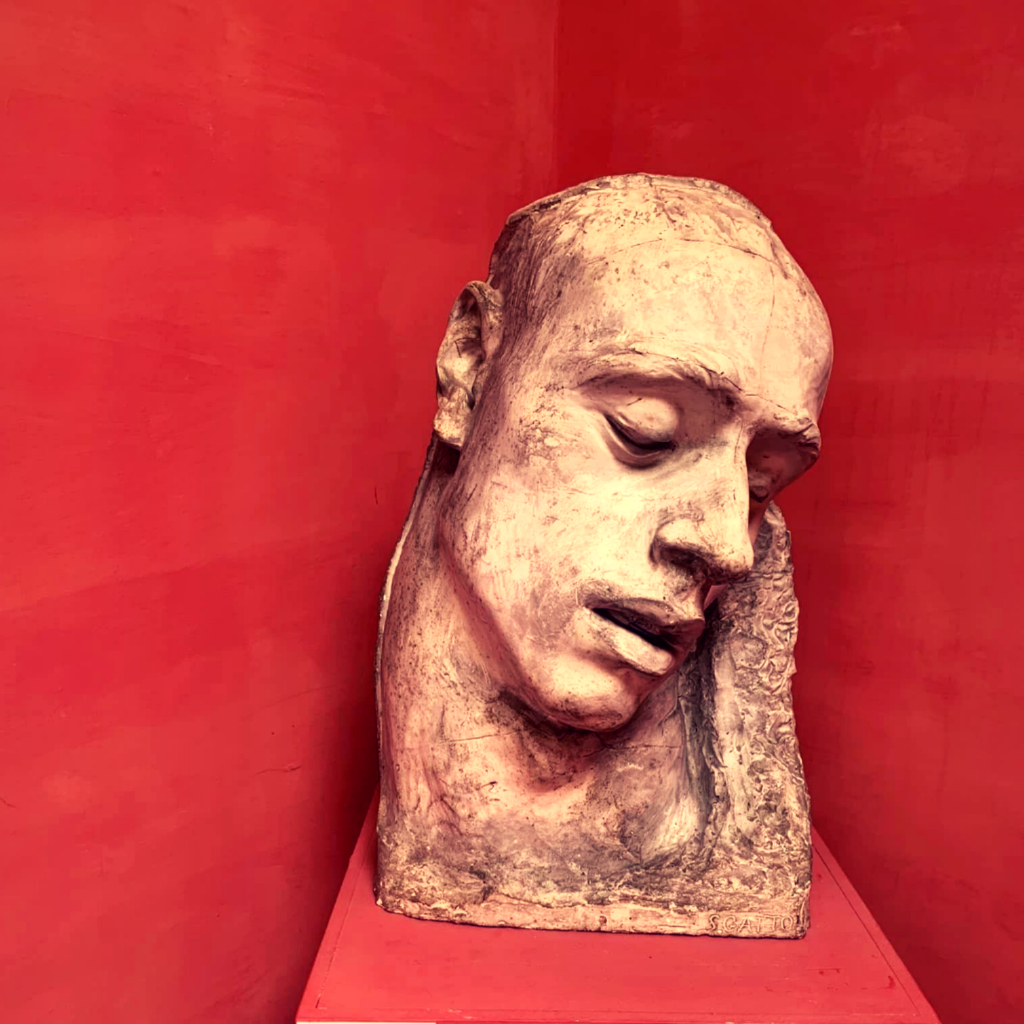On 19 October 1894, during the demolition of the Leipzig Church, scientists searched for the tomb of Bach. It was known that his remains were buried in an oak coffin next to the southern wall of this church on 31 July 1750. But this place was not marked, and over time its location was forgotten. After three days of work the researchers discovered three coffins of this tree, still rare in Leipzig. One was female, the other found a middle-aged man with a fractured skull, and the third found the entire skeleton of an elderly man. An anatomical study showed that the last could be Eisenach’s composer. But due to the constant rain, it was very difficult to remove, and apparently several bones were lost.
The study of Bach’s skeleton was commissioned from Wilhelm His. Professor of Anatomy and Physiology at the University of Leipzig put it on the board and photographed it. In 1895 he published his conclusions aimed at proving the authenticity of these bones, as well as determining the physiognomy of Bach’s face. This was the first attempt to reconstruct the face. To do this, the anatomist combined Bach’s skull with various measurements of the soft tissue of the corpses. He also hired the sculptor Carl Ludwig Seffner, who made clay and bronze mold from Bach’s skull. Seffner extracted a marble bust from his research and features of the famous portrait of Elias Gottlob Haussmann in 1746, the only one Bach posed for. This bust is at the Bach Museum in Leipzig.

In 2008, this work served as the starting point for a new three-dimensional reconstruction of the face. Order from the Bach Museum in Leipzig to the Center for Forensic Medicine at the University of Dundee. Caroline Wilkinson used Seffner’s skull mold, as well as his tissue research, along with muscle data and other evidence, to digitally reconstruct the composer’s physiognomy.
The bones of Bach returned to earth in 1904, although this time in front of the altar of the new church of Saint John. They did not last long there. Serious damage to the church center during the Second World War forced it to demolish in 1949. And the remains of Bach were transferred to their present location, in the church of Saint Thomas. During this transfer, the maxillofacial surgeon Wolfgang Rosenthal re-examined Bach’s skeleton and described details that later proved its authenticity. He apparently discovered a common deformation in the heel of the feet, known in Germany as “Organistenkrankheit”, although he did not take any new photographs and his findings appeared many years later, in 1962 in the journal of Leopoldin’s German Academy of Natural Sciences.
A few years ago, Andreas Otte, Professor of Medical Technology at the University of Offenburg, published an extensive two-stage study in the criminology of Archiv für, where he determined the precise measurements of the composer, using geometric modeling and mathematical calculation, based on the above-mentioned photograph published by His in 1895. Not surprisingly, Bach’s height was 167 centimeters , but the 26-inch wingspan that Otte had calculated for her left hand. An extension by which it could easily cover the twelfth, that is, twelve white keys on the keyboard of the current piano.

Otte describes this period of time in what was stated by his son Carl Philip Emmanuel along with his pupil Johann Friedrich Agricola in the published obituary of Lorenz Christoph Mizler in 1754. It also highlights its ability to “perform the most difficult tasks with the most fluid ease”. The organist and theorist Johann Nicolaus Forkel cites more detailed information from the direct testimonies of his sons Wilhelm Friedemann and Carl Philipp Emanuel in his 1802 biography: “Bach put his hand on the keys as follows: five fingers were cut so that his limb fell perpendicular to the keyboard. Fingers cannot fall or be thrown on the corresponding keys, as is often the case. On the contrary, they sit on a note, fully aware of the inner strength they must develop”.
But the most precise evidence supporting Otte’s discovery on Bach’s hand is read into a treatise by Christian Friedrich Daniel Schubart written between 1784 and 1785.
His treatise Ideas for an Aesthetics of Sound Art was published in 1806, and includes an accurate portrait of Bach. Here he is rightly praised as a composer and keyboardist: “He was a genius to the highest degree (…) He played the harpsichord, piano and conclave with an equal genius; and in the organ who can compare him?” But he also wrote about his left hand: “His hand was gigantic. For example, he pressed his left hand and the glove with his middle fingers. He made the scales on the pedal board with the utmost precision; he mixed the recordings so imperceptibly that the listener almost succumbed to the whirlwind of his spells. His hand was tireless and held the organ for several days. He played the harpsichord with the same dexterity as the organ, and changed all parts of the art of sound with the power of Atlant”.
It is clear that the keyboards of Bach’s time were smaller than the current ones, but the testimonies of Shubart and other contemporaries are now attached to the measurements of his bones made by Otte in 2018. Perhaps by now some passages from his fugue and other keyboard compositions are better understood, where he requires expansion of the eleventh and twelfth in his left hand.
The source: https://historiahoy.com.ar/la-mano-izquierda-bach-n3474
Read also: https://www.historyofmusic.eu/2022/01/17/2727/


